#Foochow
Explore tagged Tumblr posts
Text
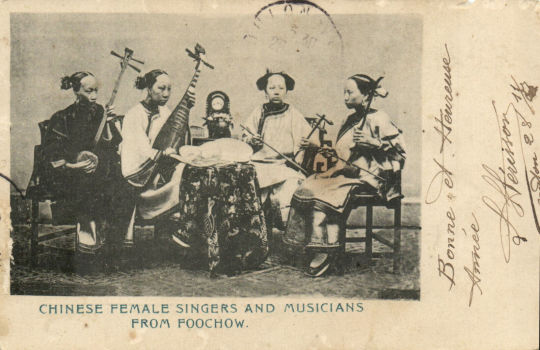
Chinese singers and musicians from Foochow, modern-day Fuzhou, China
British vintage postcard
#postkaart#photo#postcard#modern-day#Foochow#singers#photography#postal#British#sepia#postkarte#briefkaart#vintage#carte postale#from#China#ansichtskarte#musicians#Chinese#ephemera#Fuzhou#historic#tarjeta
25 notes
·
View notes
Text
01 Marine Work, Henry Scott's Night watch - Foochow, With Footnotes #323
Henry Scott (British, 1911-2005)Night Watch – FoochowOil on canvas24 x 36in (61 x 91.4cm)Private collection Sold for US$14,025 in May 2022 Fuzhou, alternately Romanised as Foochow, is the capital and one of the largest cities in Fujian province, China. Along with the many counties of Ningde, those of Fuzhou are considered to constitute the Mindong (lit. Eastern Fujian) linguistic and cultural…

View On WordPress
#Art#artist#Beach#Biography#Foochow#footnotes#Henry Scott#History#marine#Night Watch#Paintings#Sand#Sea#Seascape#Ships#Umbrellas#Zaidan
0 notes
Photo

White Pagoda, Foochow. ca. 1869. Credit line: Gilman Collection, Purchase, Robert Rosenkranz Gift, 2005 https://www.metmuseum.org/art/collection/search/289280
#aesthetic#art#abstract art#art museum#art history#The Metropolitan Museum of Art#museum#museum photography#museum aesthetic#dark academia
68 notes
·
View notes
Text

Thermopylae departing from Foochow by David Brackman (1932-2008)
103 notes
·
View notes
Text


Newsmap - Volume 4, Number 7
Record Group 26: Records of the U.S. Coast GuardSeries: Issues of the World War II Era "Newsmap" Publication
The original finding aid described this as: The obverse shows the Newsmap for the week of May 22 to May 29. The reverse shows "Paper Bullets."
Page 1 shows five maps: the Chinese coast with Japan and the Philippines, Okinawa, Tokyo, Foochow, and Mindanao. Page 2 is a story with illustrations about the creation and distribution of propaganda called “Paper Bullets.”
22 notes
·
View notes
Text
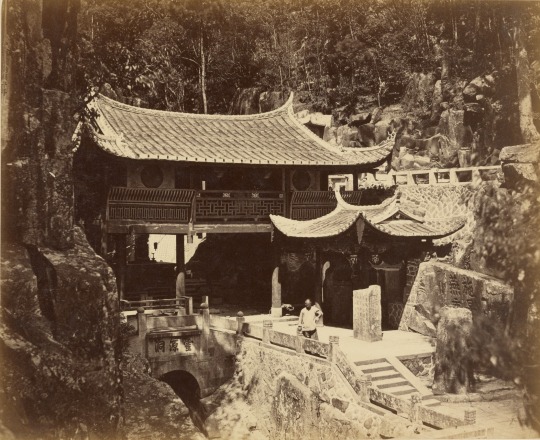
[Yongquan Monastery, Drum Mountain, near Foochow], China, 1868–1872
Getty Museum
10 notes
·
View notes
Text
So I kept hearing about this RedNote stuff and how Americans are starting to realise that Chinese are Real People.
And it's like . . . well, I could have told you that.
And apparently not everyone is up to scratch on the nuances of the Chinese diaspora? Like, people don't know that Mainlanders and Taiwanese are Different? You mean to say people don't know about Hong Kong (and the takeover there?)? Like -
OK. I guess not everyone's mother is a mainland-born Hong-Konger/NYCer. I guess not everyone knows Foochow-speaking Chinese Malaysians from Sarawak. I guess not everyone meets people whose grandparents walked across three battlefields in the Chinese Civil War. I guess not everyone's father was invited to Taiwan on a gospel trip by his Chinese friends.
I guess not everyone's parents are involved in the Chinese students' church ministries, and I guess not everyone has had housemates and roommates and gospel partners from Malaysia, Taiwan, Hong Kong and Shanghai, or who are American-born Chinese who have family stories of escaping China in the civil war.
Not everyone's mother texts her mainlander relatives on WeChat and sees pictures of the Shanghai skyline.
Maybe I should stop taking my knowledge of the Chinese diaspora for granted.
But seriously, the Chinese diaspora is complex and complicated and layered and has such a fascinating history and -
5 notes
·
View notes
Text
British support for Japan
Memorandum of Understanding Amongst the Nations of British Empire, Empire of Japan
British support for Japan
This Memorandum of Understanding is made and entered into by and between The Empire of Japan and the British Empire
In light of the empire’s recent decision to aid China in her current crisis, Japan and Britain have agreed to rekindle the Anglo-Japanese relations. The two empires have also find common ground with regards to their desires to protect their colonies and land that are rightfully theirs.
The purpose of this memorandum is to outline the understanding between the Empire of Japan and the British Empire concerning the opening of the ports of Canton, Amoy, Foochow, Ningpo and Shanghai to the latter.
The British Empire will enjoy trade-free tax as well as free docking of their ships at these ports within 30 miles of the area.
The Empire of Japan agrees to - Allow for British vessels to dock and park for free at the ports of Canton, Amoy, Foochow, Ningpo and Shanghai. - Allow for tax-free trade for British traders
The British Empire agrees to - To support Japan’s operations in Manchukuo
1 note
·
View note
Text
Of Kompia and Desire
Kompia or Kompyang aka Fuzhou Bagel, originates from China and popularised by the Foochow community in Sibu. It has two main flavours: salty and sweet. Some bakers would fill the kompia with beef and chicken, but locals would question their halal status. Luckily, Kompia House, a small bakery based in Kuching, has made it easier for people with some doubts. I have tasted their kompia, and it’s really good. Really, really good. Especially their kompia filled with daging masak hitam. So tender, so juicy. Ya Allah, sedap.
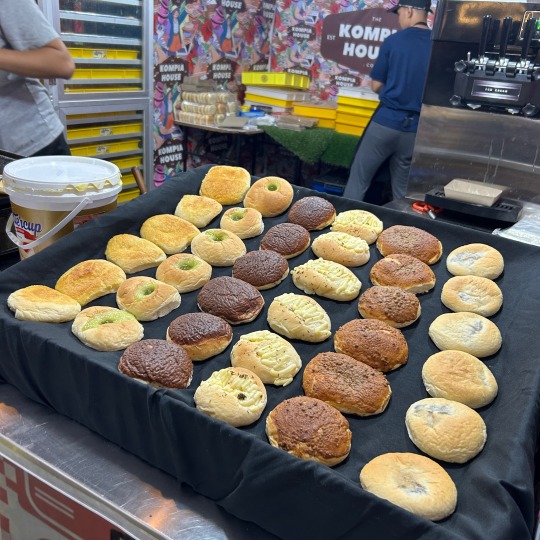
They are one of the vendors at the Kuching Food Festival, but I didn’t buy their kompia because we (me and my friend) thought it was best if we only got something we had not tried yet. But I have only tried daging hitam and butter-flavoured kompia. How about cheese and garlic, red beans, kaya, and biscoff? Maybe they wanted me to buy them, maybe they wanted to be pursued. I was thinking of their freshly baked kompia with crunchy bits on top of it and that soft and sweet bread. I can only think of how they melt in my mouth.
This is strictly about kompia and how much I want them right now. That is all.
2 notes
·
View notes
Text

Kwan Yin Boddhisatva
(Goddess of the sea)
Quan Yin is a shortened form of a name that means One Who Sees and Hears the Cry from the Human World. Her Chinese title signifies, “She who always observes or pays attention to sounds,” i.e., she who hears prayers. Sometimes possessing eleven heads, she is surnamed Sung-Tzu-Niang-Niang, “lady who brings children.” She is goddess of fecundity as well as of mercy. Worshiped especially by women, this goddess comforts the troubled, the sick, the lost, the senile and the unfortunate. Her popularity has grown such through the centuries that she is now also regarded as the protector of seafarers, farmers and travelers. She cares for souls in the underworld, and is invoked during post-burial rituals to free the soul of the deceased from the torments of purgatory. There are temples all over China dedicated to this goddess, and she is worshiped by women in South China more than in the North, on the 19th day of the 2nd, 6th and 9th moons. (For example, it is a prevalent birth custom in Foochow that when a family has a daughter married since the 15th day of the previous year, who has not yet given birth to a male infant, a present of several articles is sent to her by her relatives on a lucky day between the 5th and 14th of the first month. The articles sent are as follows: a paper lantern bearing a picture of the Goddess of Mercy, Quan Yin, with a child in her arms, and the inscription, “May Quan Yin present you with a son”; oysters in an earthenware vessel; rice-cakes; oranges; and garlic.) Worshipers ask for sons, wealth, and protection.
She can bring children (generally sons, but if the mother asks for a daughter she will be beautiful), protect in sorrow, guide seamen and fishermen (thus we see her "crossing the waves" in many poses), and render harmless the spears of an enemy in battle. Her principal temple on the island of Putuoshan, in the Chusan Archipelago off the Zhejiang coast near Ningbo, is a major pilgrimage site sacred to the Buddhists, the worship of Quan Yin being its most prominent feature on account of the fact that the Goddess is said to have resided there for nine years, reigning as the Queen of the Southern Seas. The full name of the island is P’u t’o lo ka, from Mount Pataloka, whence the Goddess, in her transformation as Avalokiteshvara, looks down upon mankind. Miao Feng Shan (Mount of the Wondrous Peak) attracts large numbers of pilgrims, who use rattles and fireworks to emphasize their prayers and attract her attention. In 847, the first temple of Quan Yin was built on this island. By 1702, P’u Tuo had four hundred temples and three thousand monks, and was the destination of countless pilgrims. (By 1949, however, P’u Tuo was home to only 140 monasteries and temples.)
0 notes
Text
20 Sarawak Dishes You Need To Try Before You Die
Who says Penang is the only place to have good food? ;)
By Samantha Khor
1. Sarawak laksa

Image via Instagram @karmenwong92
One of celebrity chef Anthony Bourdain's Top 10 dishes, Sarawak laksa consists of a vermicelli rice noodles (bihun) cooked in shrimp-based broth made from sambal belacan, sour tamarind, garlic, galangal, lemongrass and thickened with coconut milk. The dish is served with a general amount of bean sprouts (taugeh), prawns, omelette strips, and shredded chicken.
2. Kolo mee or mee kolok

Image via Jonathan Lin / Flickr
A simple noodle dish that is available for breakfast, lunch, and dinner, kolo mee consists of yellow egg noodles tossed in a light sauce before it is served with slices of barbecued pork (char siew), chicken cutlets, or minced meat. Non-halal versions might also contain lard. The dish usually comes in two flavours - plain or seasoned with red sauce. You could also request for it to be seasoned with soy sauce or - in certain places - black vinegar.
3. Midin, a crispy wild jungle fern which can be served as kerabu or stir-fried

Image via Arthur Wee / suituapui on Wordpress
Midin is typically stir-fried with garlic and/or belacan with chilli. Anchovies and salted fish may also be added into the dish, which can be found in most coffee shops that sell nasi campur.
4. Kueh chap

Image via Instagram @karmenwong92
Kueh chap are wide, flat rice noodles cooked in a herby broth consisting of pork meat, skin, internal organs as well as deep-fried tau pok and hard-boiled egg quarters/halves.
5. Ayam pansuh or manok pansoh

Image via Berita Harian / Bernama
Manok pansoh, an Iban dish, is unique in the sense that its ingredients are cooked in a bamboo. Cut chicken pieces, lemongrass, and tapioca leaves are stuffed into bamboo before it is cooked over an open fire. This cooking method seals in the flavour, which results in juicy and tender chicken with gravy perfumed by lemongrass and bamboo.
6. Manok kacangma

Image via Herbs & Spices (herbdonald) on Wordpress
Manok kacangma is a Chinese dish consisting of chicken cooked with a kacangma-based broth. The herb, which also known as motherwort, is believed to be able to ease the effects of menstruation in women. Rice wine may also be added for a more delicate taste.
7. Tomato koay teow

Image via Instagram @ging_ern
Rice noodles a.k.a. koay teow is served in a tomato sauce-based gravy with vegetables, chicken, and seafood. It is also available with crispy noodles and bihun.
8. Terung dayak, a round yellow fruit, is typically used in sour dishes such as assam sour fish and miscellaneous sour soups

Image via Arthur Wee / suituapui on Wordpress
9. Dabai, a seasonal fruit with black skin and yellow flesh

Image via Instagram @dlimkp
Dabai is a hard fruit, but soak it in warm salt water for 10 to 15 minutes and you'll get a soft, date-like snack. Fun fact - the seed can be eaten too!
10. Belacan bihun

Image via Instagram @luyen92
Belacan bihun consists of rice vermicelli served in a sweet shrimp-based (belacan) broth topped with julienned cucumber, cuttlefish slices, and century egg quarters/halves. You can also have it with a spritz of lime and chilli sauce.
11. Fried oyster pancake or 'or chien'

Image via Instagram @karmenwong92
Made to be shared, fried oyster pancake is a thin, crispy pancake with oysters concentrated in the centre. It is usually eaten with light soy sauce mixed with pepper.
12. Kompia

Image via Instagram @pierre.eats
A Foochow delicacy, kompia refers to a bun - either soft or crispy - baked in a round stone oven and typically stuffed with meat cooked in a special gravy.
13. Sarawak layer cake or kek lapis Sarawak

Image via The Kitchen Guardian on Blogspot
Layer cakes may be commonplace for most of us, but Sarawak layer cake's multi-coloured, multi-flavoured variety deserves a category of its own!
14. Mee sapi

Image via Instagram @senmirei
Although the dish typically uses noodles similar to kolok mee, mee sapi is different in the sense that it is served with a beef-based broth. Topped with generous amounts of beansprouts and beef slices, you can opt to have the broth added straight to your noodles or in a separate bowl.

Image via Instagram @karmenwong92
15. Sio bee, Kuching's version of siu mai

Image via Instagram @itell
The difference between siu mai and sio bee is that siu mai contains pork and shrimps while sio bee is 100% stuffed with pork.
16. Umai

Image via JKKN Sarawak Facebook
A Melanau delicacy, umai is made with thin slivers of fresh fish (usually iced instead of frozen) combined with thinly-sliced onions, chilli, salt, and juice from calamansi lime or assam fruit. It is usually served with roasted sago pearls - sago starch mixed with coconut milk, which are then rolled into balls and cooked - instead of rice. The dish is sometimes prepared with cooked prawns.
17. Mani (money) chai bihun or *bihun cangkuk manis*

Image via Instagram @karmenwong92
Mani chai bihun, of Hakka origin, consists of bihun stir-fried with eggs, prawns, chicken pieces, and the sweet mani chai herb.
18. Kampua mee

Image via Instagram @rachrich85
Although it looks similar to kolo mee, kampua mee is actually meant to be drier than kolo mee. Typically served with slices of barbecued pork and a bowl of soup, the noodles can either be served plain or tossed in soy sauce or chilli sauce.
19. Bubur pedas

Image via Instagram @hascelly
A traditional Malay dish originating from Indonesia, bubur pedas is a popular dish during the Muslim fasting month of Ramadan. The dish consists of porridge cooked in spices such as turmeric, lemongrass, galangal, chillies, ginger, coconut and shallots, topped with fried anchovies, fried onions, and peanuts.
20. Nasik aruk

Image via HuntersFood.com
Though it is classified as fried rice, this traditional Sarawakian Malay dish is not fried with oil. The ingredients consist of garlic, onion, and anchovies fried with cooked rice. The rice is fried until it achieves a smokey or slightly-burned taste.
0 notes
Text
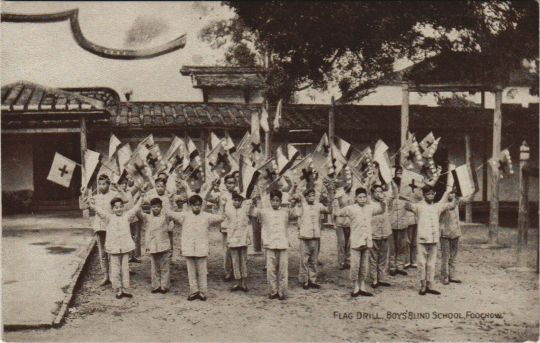
Boys' blind school in Foochow, modern-day Fuzhou, China
British vintage postcard
#postkaart#photo#postcard#modern-day#Foochow#school#photography#postal#British#sepia#postkarte#briefkaart#vintage#carte postale#China#ansichtskarte#ephemera#Fuzhou#blind#Boys#historic#tarjeta
10 notes
·
View notes
Link
Check out this listing I just added to my Poshmark closet: 🎆🎇VINTAGE A.D 'ESTREHAN 🎑🎉💝🎄.
0 notes
Text

Fuzhou, alternately Romanised as Foochow, is the capital and one of the largest cities in Fujian province, China. Along with the many counties of Ningde, those of Fuzhou are considered to constitute the Mindong (lit. Eastern Fujian) linguistic and cultural area…
Please follow link for full post
Art,Paintings,Sand,artist,Umbrellas,biography,History,Sea,Henry Scott,Night Watch,Beach,Marine,Zaidan,Ships,Seascape,Foochow,footnotes,
01 Marine Work, Henry Scott's Night watch - Foochow, With Footnotes #323
0 notes
Text

Night watch - Foochow by Henry Scott (1911-2005)
82 notes
·
View notes
Text

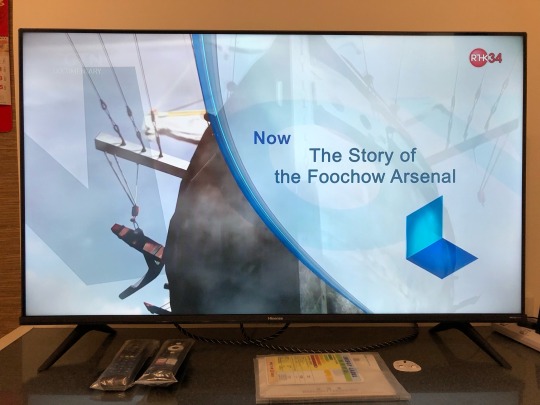
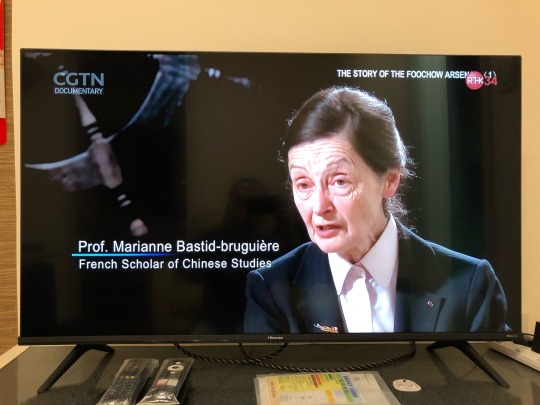

[China-France Relations 1964-2024] In order to celebrate the 60th anniversary of the establishment of diplomatic relations between France and the People’s Republic of China (PRC), CGTN Documentary rebroadcasts the English-language edition of the 2014 China Central Television (CCTV) documentary “The Story of the Foochow Arsenal” starting from Sunday, May 5. Here in Hong Kong, RTHK TV 34 relays the live signal of CGTN Documentary 24/7. I watched the first broadcast of this documentary a decade ago and visited French Sinologist Marianne Bastid-Bruguière in Paris the next year (2015).
[Relations Chine-France 1964-2024] Afin de célébrer le 60e anniversaire de l’établissement des relations diplomatiques entre la France et la République populaire de Chine (RPC), la chaîne de télévision CGTN Documentary rediffuse l’édition anglophone du documentaire de la Télévision centrale de Chine (CCTV) de 2014 « L’histoire de l’arsenal de Fuzhou » à partir du dimanche 5 mai. Ici à Hong Kong, RTHK TV 34 relaie le signal en direct de CGTN Documentary 24 heures sur 24 et 7 jours sur 7. J’ai regardé la première diffusion de ce documentaire il y a une décennie. Je suis allé voir la sinologue française Marianne Bastid-Bruguière à Paris l’année suivante (2015).
0 notes